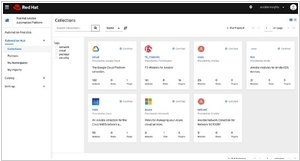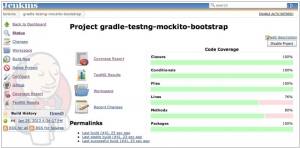Ansible vs Jenkins
July 30, 2023 | Author: Michael Stromann
Ansible and Jenkins are two popular DevOps tools that serve different purposes and have distinct characteristics in automating and managing software workflows.
Ansible is a configuration management and automation tool that focuses on infrastructure as code. It allows users to define the desired state of their systems using YAML playbooks. These playbooks describe the tasks and configurations needed to bring systems to the desired state, making it easy to manage and deploy infrastructure across multiple servers. Ansible's agentless architecture sets it apart from other configuration management tools, as it communicates with remote machines over SSH without requiring any agents to be installed on the target systems. This simplicity and ease of use make Ansible an attractive choice for automating repetitive tasks, managing configurations, and orchestrating complex infrastructure setups.
In contrast, Jenkins is a continuous integration and continuous delivery (CI/CD) automation server that focuses on automating the software development lifecycle. Jenkins provides a web-based interface to create, schedule, and monitor various automation jobs known as builds. These jobs can include tasks such as building, testing, and deploying applications. Jenkins is known for its extensibility, as it supports a vast array of plugins that allow users to integrate with various tools, version control systems, and cloud services. The tool's primary objective is to enable continuous integration and delivery, ensuring that code changes are automatically tested and deployed to production, promoting faster development cycles and reducing the risk of integration issues.
See also: Top 10 Cloud Management platforms
Ansible is a configuration management and automation tool that focuses on infrastructure as code. It allows users to define the desired state of their systems using YAML playbooks. These playbooks describe the tasks and configurations needed to bring systems to the desired state, making it easy to manage and deploy infrastructure across multiple servers. Ansible's agentless architecture sets it apart from other configuration management tools, as it communicates with remote machines over SSH without requiring any agents to be installed on the target systems. This simplicity and ease of use make Ansible an attractive choice for automating repetitive tasks, managing configurations, and orchestrating complex infrastructure setups.
In contrast, Jenkins is a continuous integration and continuous delivery (CI/CD) automation server that focuses on automating the software development lifecycle. Jenkins provides a web-based interface to create, schedule, and monitor various automation jobs known as builds. These jobs can include tasks such as building, testing, and deploying applications. Jenkins is known for its extensibility, as it supports a vast array of plugins that allow users to integrate with various tools, version control systems, and cloud services. The tool's primary objective is to enable continuous integration and delivery, ensuring that code changes are automatically tested and deployed to production, promoting faster development cycles and reducing the risk of integration issues.
See also: Top 10 Cloud Management platforms




